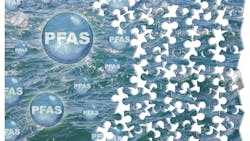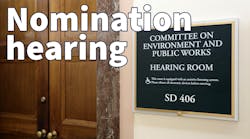What to know
- EPA to designate a new agency lead for PFAS
- The agency will look into a polluter pays model
- The EPA will set effluent limitation guidelines for manufacturers
The U.S. Environmental Protection Agency announced on April 28, 2025, upcoming agency actions to address Per- and Polyfluoroalkyl Substances (PFAS).
The list of actions included in part the designation of an agency lead for PFAS, the creation of effluent limitation guidelines (ELGs) for certain PFAS to stop the chemicals from entering drinking water systems, and initiatives to engage Congress and industry to establish a clear liability framework that ensures the polluter pays and passive receivers are protected.
The passive receiver issue is something EPA Administrator Lee Zeldin spoke on during his nomination hearing, stating that it “is something where it could get passed down to the consumer where they end up paying for cleanup costs in a way that we need to be cognizant of at the EPA.”
In the announcement, the EPA stated that it will “resource and support investigations into violations to hold polluters accountable.”
“I have long been concerned about PFAS and the efforts to help states and communities dealing with legacy contamination in their backyards,” said Administrator Zeldin in an EPA press release. “With today’s announcement, we are tackling PFAS from all of EPA’s program offices, advancing research and testing, stopping PFAS from getting into drinking water systems, holding polluters accountable, and providing certainty for passive receivers. This is just a start of the work we will do on PFAS to ensure Americans have the cleanest air, land, and water.”
What the EPA PFAS announcement means
The announcement comes after months of silence and quiet moves surrounding PFAS, and lays down the framework that the agency, and the Trump Administration, will take regarding the family of chemicals. While no direct regulatory changes were made in the announcement, it provides actionable items that the agency will take to address PFAS, including:
- Designating an agency lead for PFAS to manage PFAS efforts across agency programs.
- Implementing a PFAS testing strategy under Toxic Substances Control Act (TSCA) Section 4.
- Use Safe Drinking Water Act authority to investigate and address immediate endangerment.
- Add PFAS to the Toxic Release Inventory (TRI) in line with Congressional direction from the 2020 National Defense Authorization Act.
- Advance remediation efforts and cleanup efforts where drinking water supplies are impacted by PFAS contamination.
- Work with states to assess risks from PFAS contamination and the development of analytical and risk assessment tools.
- Develop effluent limitation guidelines (ELGs) for PFAS manufacturers and metal finishers and evaluate other ELGs necessary for reduction of PFAS discharges.
“Some of the initiatives announced by EPA could begin to advance Administrator Lee Zeldin’s stated objective: ‘to ensure Americans have the cleanest air, land, and water,’” said Environment America Research & Policy Center’s Clean Water Director and Senior Attorney John Rumpler in a statement. “These include setting at least some limits on how much PFAS certain industries can release into our waterways and using our nation’s toxic substances law to restrict the use of these chemicals – hopefully in the strong manner that several states have already done.”
The EPA stated that the actions follow three key agency principles:
- Strengthening the science
- Fulfilling statutory obligations and enhancing communication
- Building partnerships
The announcement may open the door for the agency to make regulatory changes on things like limits on effluent discharges containing PFAS.
“Other steps in the EPA’s announcement – including unspecified adjustments to liability and national drinking water limits – bear careful attention as they are developed,” Rumpler said in a statement.
Read more
About the Author
Alex Cossin
Associate Editor
Alex Cossin is the associate editor for Waterworld Magazine, Wastewater Digest and Stormwater Solutions, which compose the Endeavor Business Media Water Group. Cossin graduated from Kent State University in 2018 with a Bachelor of Science in Journalism. Cossin can be reached at [email protected].




